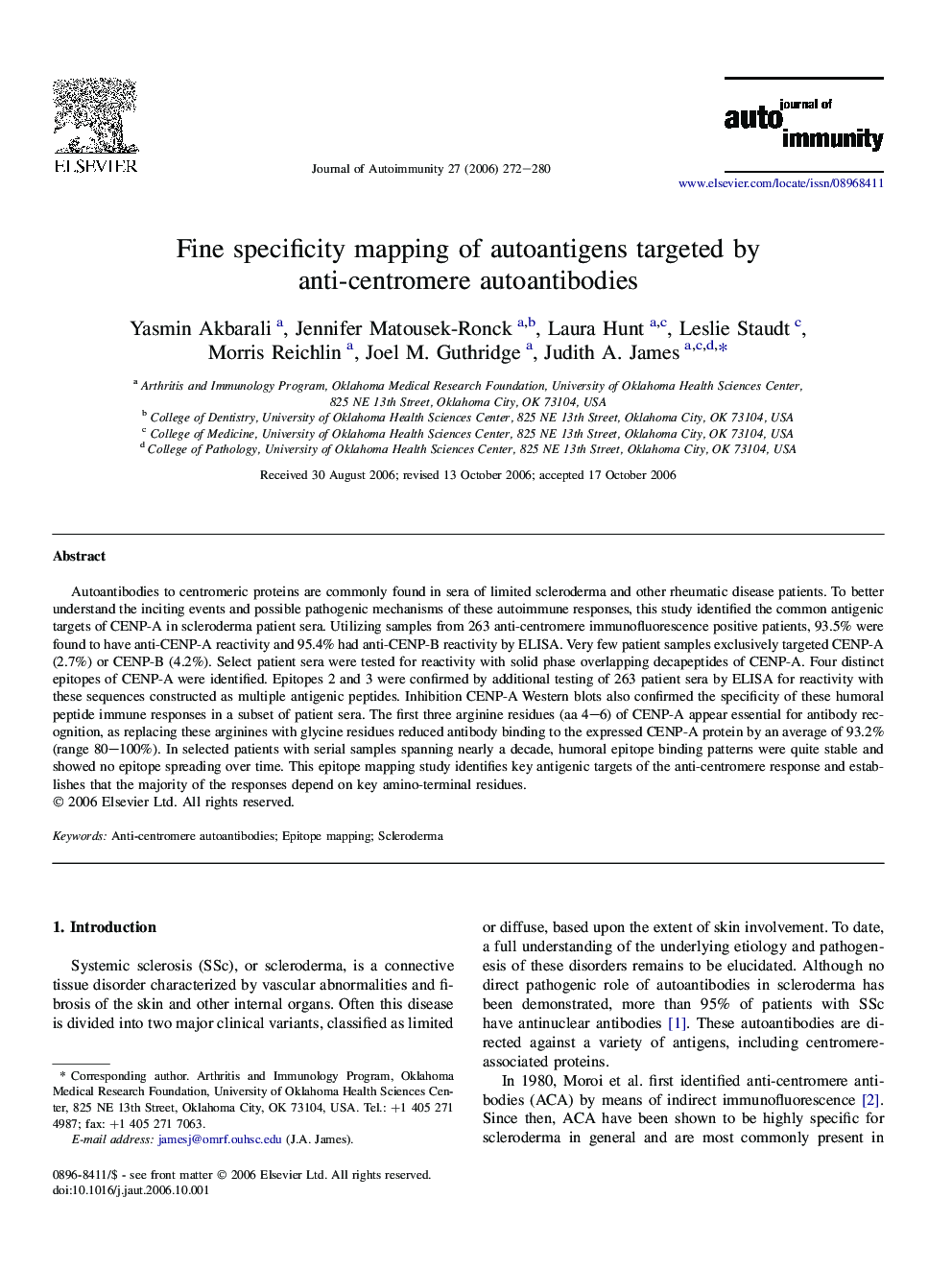| Article ID | Journal | Published Year | Pages | File Type |
|---|---|---|---|---|
| 3368481 | Journal of Autoimmunity | 2006 | 9 Pages |
Autoantibodies to centromeric proteins are commonly found in sera of limited scleroderma and other rheumatic disease patients. To better understand the inciting events and possible pathogenic mechanisms of these autoimmune responses, this study identified the common antigenic targets of CENP-A in scleroderma patient sera. Utilizing samples from 263 anti-centromere immunofluorescence positive patients, 93.5% were found to have anti-CENP-A reactivity and 95.4% had anti-CENP-B reactivity by ELISA. Very few patient samples exclusively targeted CENP-A (2.7%) or CENP-B (4.2%). Select patient sera were tested for reactivity with solid phase overlapping decapeptides of CENP-A. Four distinct epitopes of CENP-A were identified. Epitopes 2 and 3 were confirmed by additional testing of 263 patient sera by ELISA for reactivity with these sequences constructed as multiple antigenic peptides. Inhibition CENP-A Western blots also confirmed the specificity of these humoral peptide immune responses in a subset of patient sera. The first three arginine residues (aa 4–6) of CENP-A appear essential for antibody recognition, as replacing these arginines with glycine residues reduced antibody binding to the expressed CENP-A protein by an average of 93.2% (range 80–100%). In selected patients with serial samples spanning nearly a decade, humoral epitope binding patterns were quite stable and showed no epitope spreading over time. This epitope mapping study identifies key antigenic targets of the anti-centromere response and establishes that the majority of the responses depend on key amino-terminal residues.
